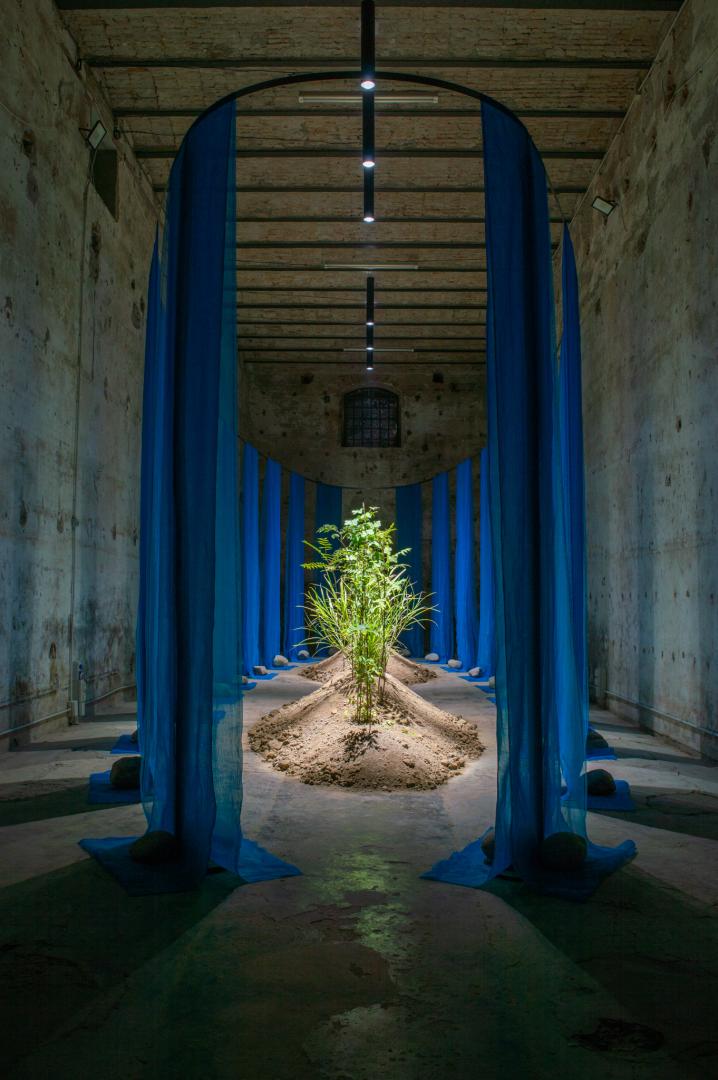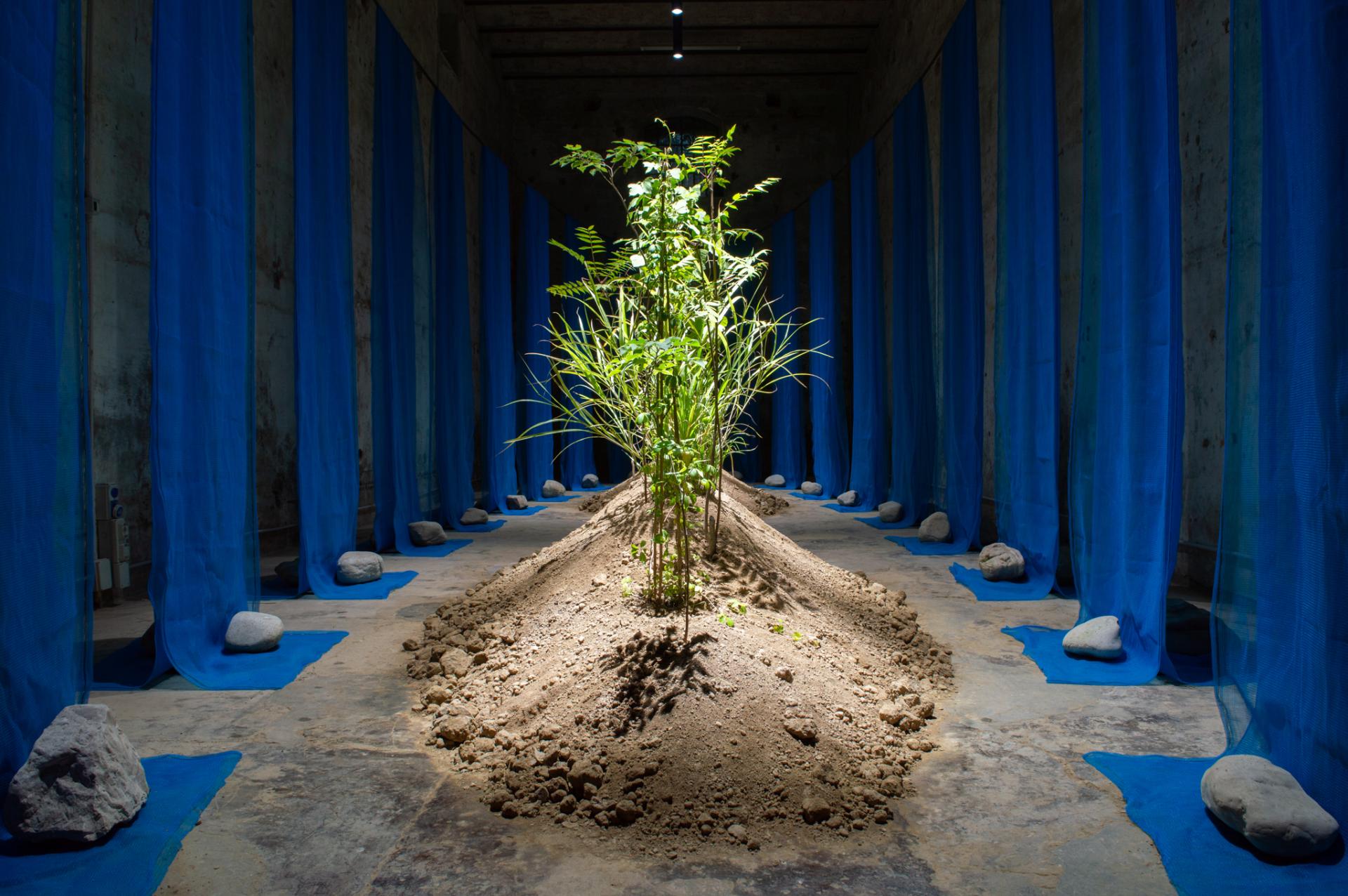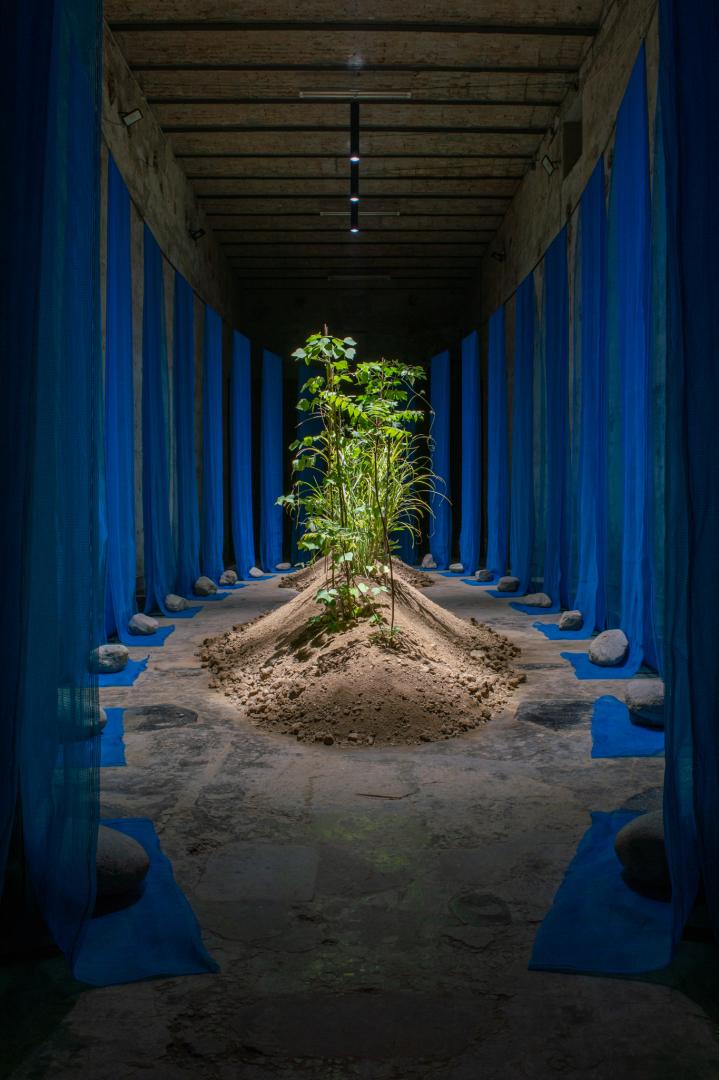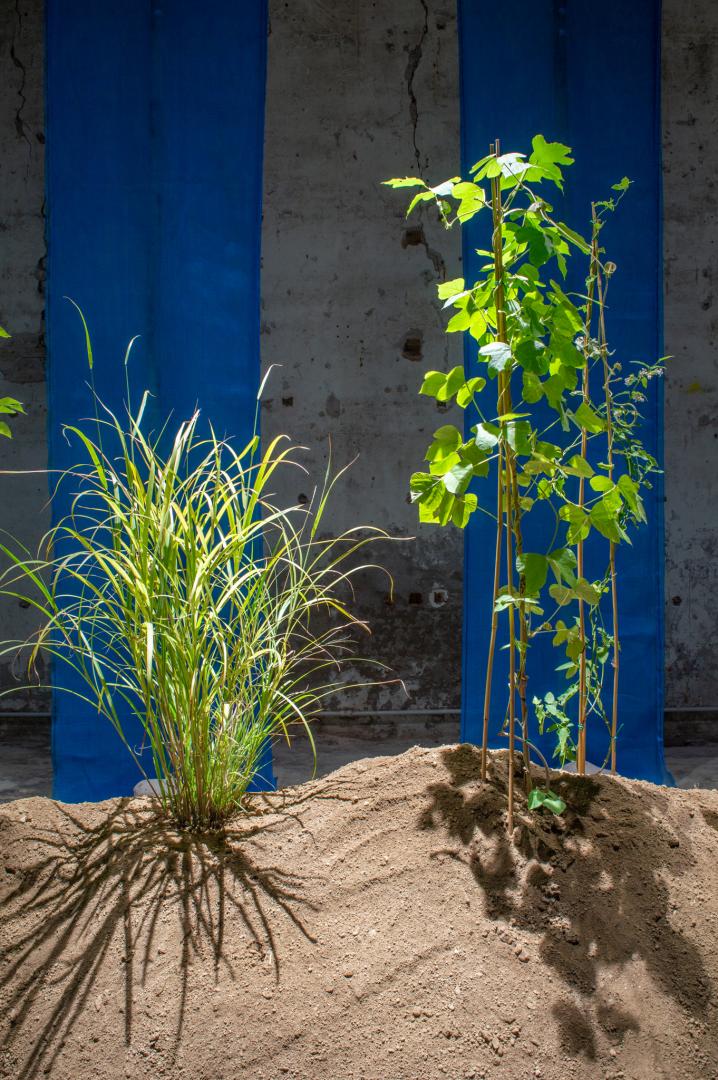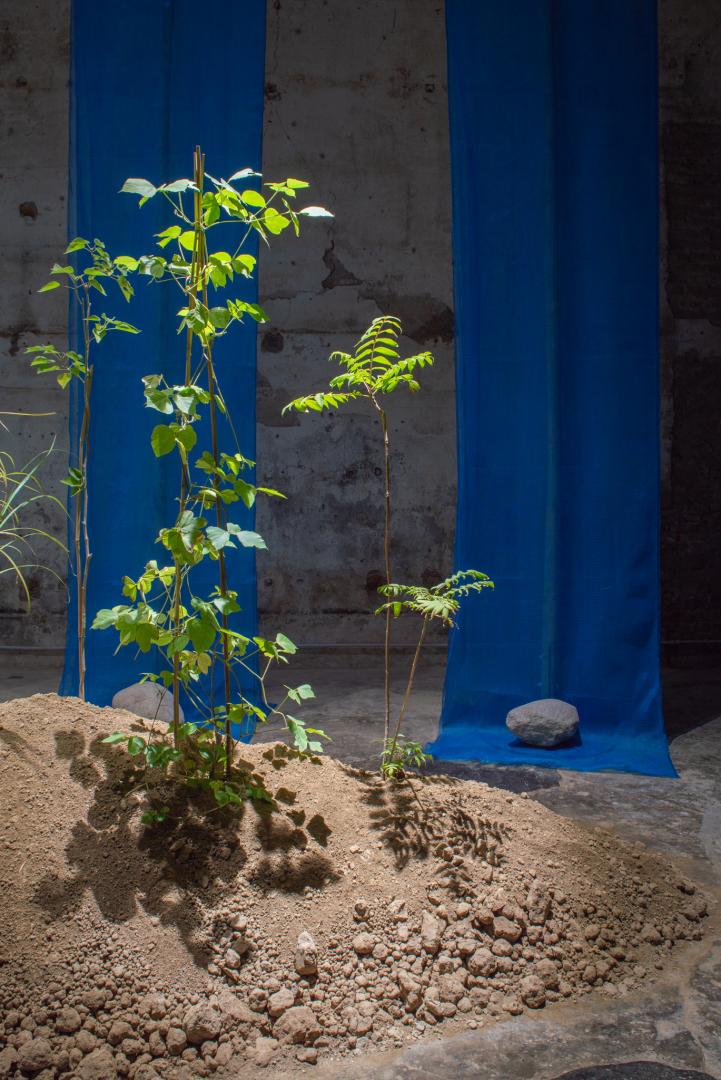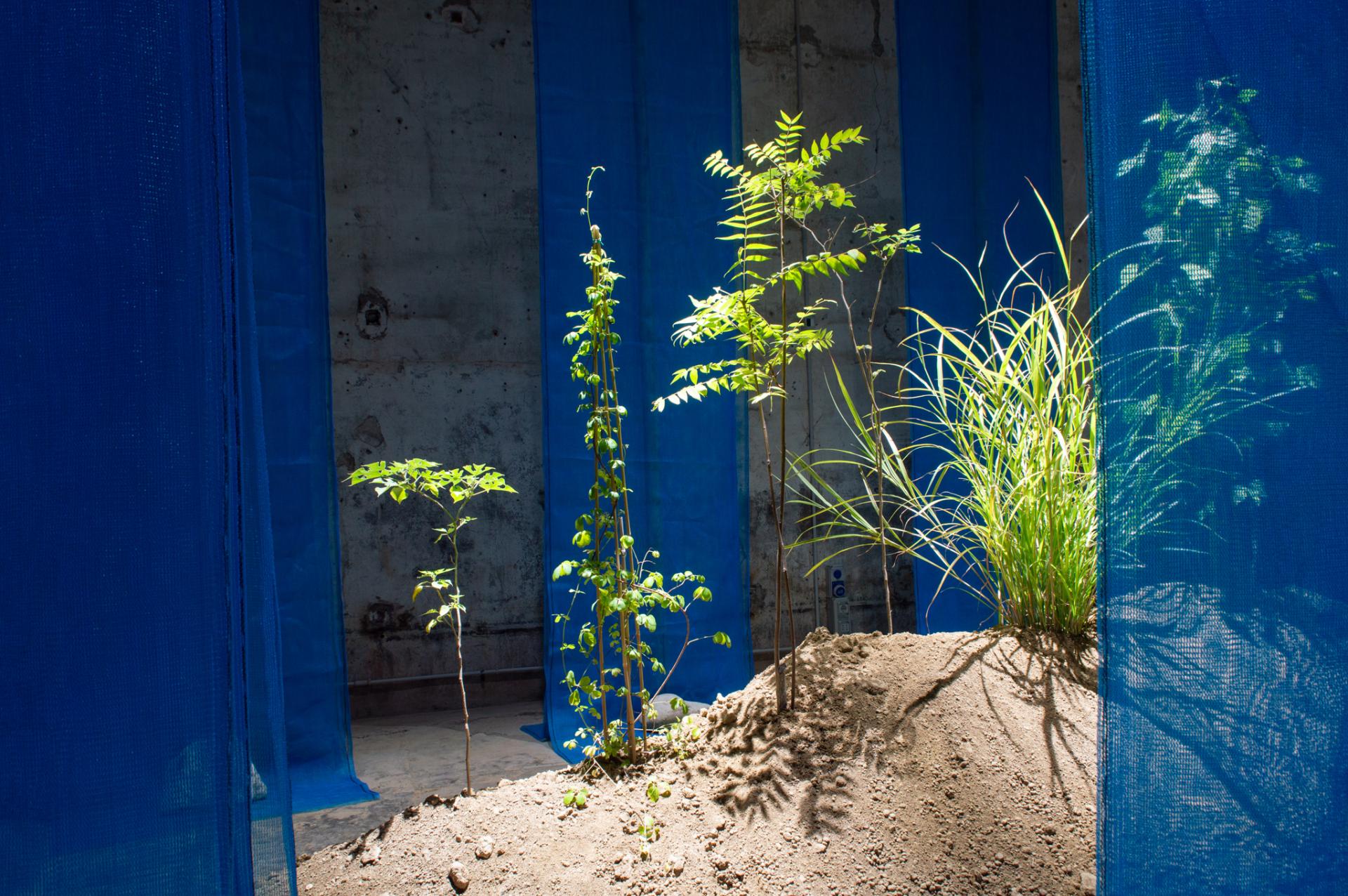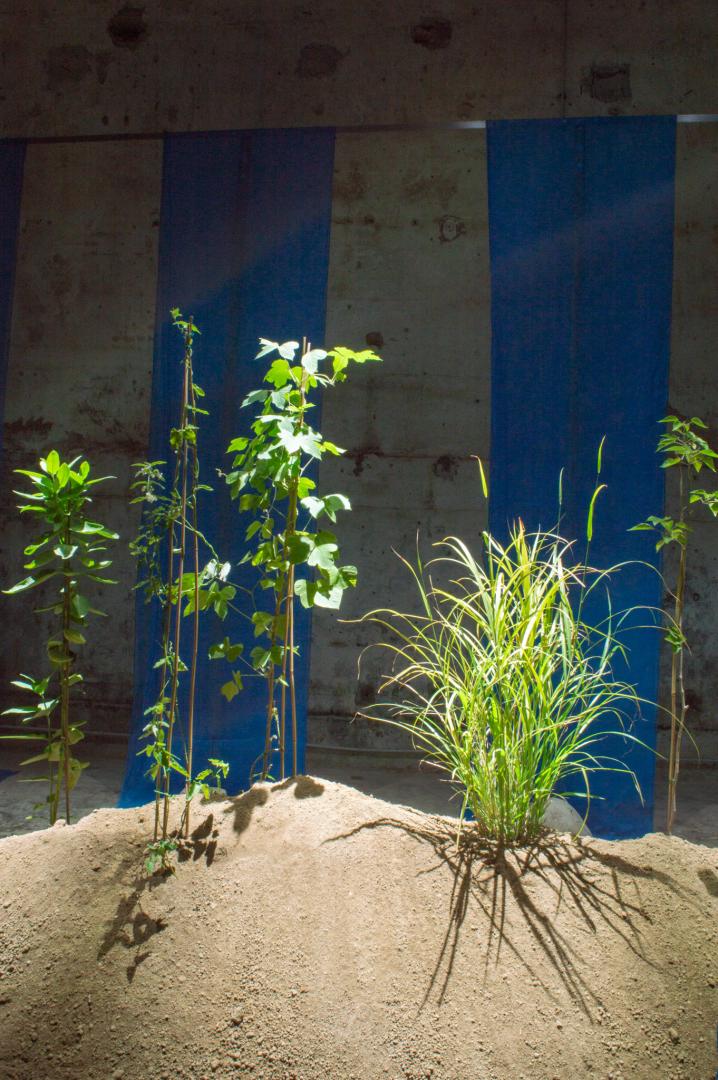The Forbidden Garden of Europe
Basic information
Project Title
The Forbidden Garden of Europe
Full project title
The Forbidden Garden of Europe
Category
Reconnecting with nature
Project Description
The Forbidden Garden of Europe hosted a garden of ‘invasive alien plant species’. They have been listed for their ethnic and biological characteristics and pose a threat to European native species. The European legislative act of 2016 instated a list of 35 invasive plant species which are to be eradicated and banned from European soil. The studio questioned this European legislation to provoke the discussion on whether spatial, legal and social restrictions contribute to a more inclusive society
Geographical Scope
Local
Project Region
Venice, Italy
Urban or rural issues
It addresses urban-rural linkages
Physical or other transformations
It refers to other types of transformations (soft investment)
EU Programme or fund
Yes
Which funds
Other
Other Funds
We are not sure if this is European program but we received a subsidy form the <br />
European Cultural Foundation (ECF) which is based in amsterdam, it was called the<br />
culture of solidarity fund 2021
Description of the project
Summary
In 2021 we were part of the Dutch parallel program of the Venice Architecture Biennale 2021. We designed and planted a garden of forbidden plant species (which are illegal in Europe) in an abandoned old beer brewery on the island of Giudecca. The garden was based on a list of Invasive Alien Species, which describes specific plant species which have been banned and need passports to cross European borders.
With our garden we aimed to revive a culture of solidarity across Europe by portraying the cultural background and origin of these plants by giving them a voice, as a metaphor of excluded minorities.
We wanted to target an audience which is discouraged by the polarized debate about migration, but who want to contribute to a solution. We aim to spark a discussion about new ways of living together. Do spatial, social and legal restrictions always contribute to a more inclusive way of living together?
By reconnecting with nature in this very specific way we created a parallel between the fate of these plants and the fate of many of our neighbors who struggle to find common ground in Europe just because they are different. Through identifying with these plants we rose awareness about how much is still to be done to create an inclusive Europe for everyone; a multi-species society where we can live like neighbors and we won’t have to judge people by their history or ethnic appearance, but just for who they are.
We encouraged people to take responsibility for their 'physical and intellectual Garden', which is vast and magnificent as long as we are able to see we are all equal, and part of a vast constellation of natural bodies, that gives us the opportunity to learn and grow just like nature does. We aimed to address these urgent European issues both on a regional scale and the international platform of the Biennale.
With our garden we aimed to revive a culture of solidarity across Europe by portraying the cultural background and origin of these plants by giving them a voice, as a metaphor of excluded minorities.
We wanted to target an audience which is discouraged by the polarized debate about migration, but who want to contribute to a solution. We aim to spark a discussion about new ways of living together. Do spatial, social and legal restrictions always contribute to a more inclusive way of living together?
By reconnecting with nature in this very specific way we created a parallel between the fate of these plants and the fate of many of our neighbors who struggle to find common ground in Europe just because they are different. Through identifying with these plants we rose awareness about how much is still to be done to create an inclusive Europe for everyone; a multi-species society where we can live like neighbors and we won’t have to judge people by their history or ethnic appearance, but just for who they are.
We encouraged people to take responsibility for their 'physical and intellectual Garden', which is vast and magnificent as long as we are able to see we are all equal, and part of a vast constellation of natural bodies, that gives us the opportunity to learn and grow just like nature does. We aimed to address these urgent European issues both on a regional scale and the international platform of the Biennale.
Key objectives for sustainability
In order to think about a sustainable Europe as a whole we should see it as a multispecies society. We see society as an ecosystem and the ecosystem as a society, in a sense we think of ‘multispecies urbanism’ as a natural organism. With this bold statement we aimed to spark an international discussion about new ways of living together. Our exhibition space at the Venice Biennale will host a garden of ‘invasive alien plant species’, which have been listed for their ethnic and biological characteristics and pose a threat to European native species. The garden will contain the voices and bodies of these plants. Every plant will have its own narrative by means of a podcast series, explaining their background based on their ethnobotanical history. The narratives of these plants will echo the experience of many. We should value them based on their individuality instead of judging them as a group with 'assumed' characteristics.
We create a parallel between the fate of these plants and the fate of many of our neighbors who struggle to find common ground in Europe just because they are different. Through identifying with these plants we want to create awareness about how much is still to be done to create an inclusive Europe for everyone; a multi-species society where we can live like neighbors and we won’t have to judge people by their history or ethnic appearance, but just for who they are.
We want to encourage people to take responsibility for their 'physical and intellectual Garden', which is vast and magnificent as long as we are able to see we are all equal, and part of a vast constellation of natural bodies, that gives us the opportunity to learn and grow just like nature does.
We create a parallel between the fate of these plants and the fate of many of our neighbors who struggle to find common ground in Europe just because they are different. Through identifying with these plants we want to create awareness about how much is still to be done to create an inclusive Europe for everyone; a multi-species society where we can live like neighbors and we won’t have to judge people by their history or ethnic appearance, but just for who they are.
We want to encourage people to take responsibility for their 'physical and intellectual Garden', which is vast and magnificent as long as we are able to see we are all equal, and part of a vast constellation of natural bodies, that gives us the opportunity to learn and grow just like nature does.
Key objectives for aesthetics and quality
In our Forbidden Garden of Europe we cultivate coexistence. Instead of building walls and closing borders, our main objective is to inspire and invite people to coexist, to keep Europe an open and shared public space.
The exhibition was on an island in Venice which was only reachable by boat. After taking the vaporetto to Giudecca visitors walked 5 minutes through an old industrial complex of a former beer brewery, close to the Molino Stucky. The exhibition was hosted in the former freezer, a big space of 26 by 6 meter and 7 meter high with almost no windows. Within this space we planted the garden. Visitors entered through a steel door in a small hall with an explanatory text about the project. Here they received a short explanation about the garden by the attendants. From there they could enter the big space and wander through the garden. Most of them first walked around the enclosure and after a while passed by the blue fabric and entered the enclosed space. People who visited the garden received a brochure with information about the exhibition. Through this link : https://studiowild.nl/Ailanthus-altissima-EN available through a QR code they were able to listen to the background stories of the plants available in three languages; Italian, English and Dutch.
A blue enclosure of blue agricultural fabric surrounded the garden, which was supported by chestnut columns and kept in place by big river stones. Illuminated with slim bundles of light, the plants were positioned on two mountains of soil. By doing so we aimed to evoke the idea of 'The Forbidden Garden of Europe', a place to contemplate and reflect on the topics we addressed with the exhibition. At this location we organize a program of events, debates and activities in collaboration with our local partners, Robida, Università di Venezia IUAV, and the Botanical Garden of Padova. Both on a regional scale and the international platform of the Biennale we aimed to address these urgent European issues.
The exhibition was on an island in Venice which was only reachable by boat. After taking the vaporetto to Giudecca visitors walked 5 minutes through an old industrial complex of a former beer brewery, close to the Molino Stucky. The exhibition was hosted in the former freezer, a big space of 26 by 6 meter and 7 meter high with almost no windows. Within this space we planted the garden. Visitors entered through a steel door in a small hall with an explanatory text about the project. Here they received a short explanation about the garden by the attendants. From there they could enter the big space and wander through the garden. Most of them first walked around the enclosure and after a while passed by the blue fabric and entered the enclosed space. People who visited the garden received a brochure with information about the exhibition. Through this link : https://studiowild.nl/Ailanthus-altissima-EN available through a QR code they were able to listen to the background stories of the plants available in three languages; Italian, English and Dutch.
A blue enclosure of blue agricultural fabric surrounded the garden, which was supported by chestnut columns and kept in place by big river stones. Illuminated with slim bundles of light, the plants were positioned on two mountains of soil. By doing so we aimed to evoke the idea of 'The Forbidden Garden of Europe', a place to contemplate and reflect on the topics we addressed with the exhibition. At this location we organize a program of events, debates and activities in collaboration with our local partners, Robida, Università di Venezia IUAV, and the Botanical Garden of Padova. Both on a regional scale and the international platform of the Biennale we aimed to address these urgent European issues.
Key objectives for inclusion
The European legislative act from 2016 instated a list of 35 invasive plant species which are to be eradicated and banned from European soil. This means that these plant species have been degraded to a minority that cannot be traded, imported, sold or grown within the borders of the European Union. We wanted to question this European legislation, and by doing so, provoked the discussion on whether spatial, legal and social restrictions contribute to a more inclusive society.
To question these restrictions in our shared public space, we created an inclusive Garden of 'invasive' plants without many defined borders. These plants are a metaphor for all those who are not included. With a cultural approach we aimed to shed new light on this relevant issue, by giving each of the plants a voice on the international platform of the Venice Biennale. As Voltaire has put it at the end of his ‘Candide’: “Il faut cultiver notre jardin”. In order to change the world around us, we have to take responsibility for cultivating our Garden. With this notion in mind, we investigated new ways of living together.
With our installation and additional program we aimed to revive a culture of solidarity. Rather than banning plants from European soil we cultivated coexistence in a post COVID-19 society. We saw it as the time to recalibrate ourselves and set course for future oriented solutions. With The Forbidden Garden of Europe we wanted to expand the notion of Europe as an open and shared public space for everybody during times of inward looking and decision-making based on nationalistic values. A transdisciplinary and cross-cultural approach is in our eyes the only way to include the domains of architecture, politics, society and nature in the discussion involving a multispecies society.
To question these restrictions in our shared public space, we created an inclusive Garden of 'invasive' plants without many defined borders. These plants are a metaphor for all those who are not included. With a cultural approach we aimed to shed new light on this relevant issue, by giving each of the plants a voice on the international platform of the Venice Biennale. As Voltaire has put it at the end of his ‘Candide’: “Il faut cultiver notre jardin”. In order to change the world around us, we have to take responsibility for cultivating our Garden. With this notion in mind, we investigated new ways of living together.
With our installation and additional program we aimed to revive a culture of solidarity. Rather than banning plants from European soil we cultivated coexistence in a post COVID-19 society. We saw it as the time to recalibrate ourselves and set course for future oriented solutions. With The Forbidden Garden of Europe we wanted to expand the notion of Europe as an open and shared public space for everybody during times of inward looking and decision-making based on nationalistic values. A transdisciplinary and cross-cultural approach is in our eyes the only way to include the domains of architecture, politics, society and nature in the discussion involving a multispecies society.
Results in relation to category
Next to the exhibition we (co)organised a series of events and activities in and around The Forbidden Garden of Europe. We also hosted an intern program through Spazio Punch and the universities IUAV and Ca’Foscari. We hosted weekly digital meetings with the involved students, reflecting on the question the installation tried to raise.
With our podcast we also had a digital reach through which we aimed to reach people who were not able to visit Venice and La biennale. Because we hosted the exhibition in Spazio Punch, an exhibition space on Giudecca, we were immediately connected to the local network of people active in the creative scene. Adding to this the collaboration with the universities helped to connect with students and the academic network in and around Venice. Also the partnership with the Botanical Garden in Padua helped to reach people involved in the world of horticulture and expertise in the field of plants. There were a couple a mentions of the project by media and institutions, here a short overview to the links of the articles:
There were a couple a mentions of the project by media and institutions, here a short overview to the links of the articles:
https://i-d.vice.com/it/article/n7bg4z/progetti-arte-venezia
https://www.artribune.com/mostre-evento-arte/studio-wild-the-forbidden-garden-of-europe/
https://www.arte.it/calendario-arte/venezia/mostra-studio-wild-the-forbidden-garden-of-europe-79511
https://www.reportha.org/en/news/item/618-the-forbidden-garden-of-europe
https://riforma.it/it/articolo/2021/11/03/forbidden-garden-europe
https://www.unipd.it/news/lorto-botanico-biennale-architettura-due-installazioni
https://culturalfoundation.eu/stories/cosround2-studio-wild
https://duurzaamhout.nl/actueel/kastanjehouten-palen-van-vliet-onderdeel-architectuurexpositie-venetie/
https://stimuleringsfonds.nl/nl/toekenningen/architectuur_binnale_the_forbidden_garden_of_europe/
https://whoiswe.hetnieuweinstituut.nl/en/programme/studio-wild
With our podcast we also had a digital reach through which we aimed to reach people who were not able to visit Venice and La biennale. Because we hosted the exhibition in Spazio Punch, an exhibition space on Giudecca, we were immediately connected to the local network of people active in the creative scene. Adding to this the collaboration with the universities helped to connect with students and the academic network in and around Venice. Also the partnership with the Botanical Garden in Padua helped to reach people involved in the world of horticulture and expertise in the field of plants. There were a couple a mentions of the project by media and institutions, here a short overview to the links of the articles:
There were a couple a mentions of the project by media and institutions, here a short overview to the links of the articles:
https://i-d.vice.com/it/article/n7bg4z/progetti-arte-venezia
https://www.artribune.com/mostre-evento-arte/studio-wild-the-forbidden-garden-of-europe/
https://www.arte.it/calendario-arte/venezia/mostra-studio-wild-the-forbidden-garden-of-europe-79511
https://www.reportha.org/en/news/item/618-the-forbidden-garden-of-europe
https://riforma.it/it/articolo/2021/11/03/forbidden-garden-europe
https://www.unipd.it/news/lorto-botanico-biennale-architettura-due-installazioni
https://culturalfoundation.eu/stories/cosround2-studio-wild
https://duurzaamhout.nl/actueel/kastanjehouten-palen-van-vliet-onderdeel-architectuurexpositie-venetie/
https://stimuleringsfonds.nl/nl/toekenningen/architectuur_binnale_the_forbidden_garden_of_europe/
https://whoiswe.hetnieuweinstituut.nl/en/programme/studio-wild
How Citizens benefit
Our team consisted of citizens from different countries, coming from Italy, Netherlands, India and Argentina, with different backgrounds working both in the Netherlands and Italy. We also collaborated with local parties; three universities and the Italian-Slovenian cultural organization Robida. This resulted in a very varied organization with people from different cultural backgrounds, age, income and gender.
Because we hosted the exhibition in Spazio Punch, an exhibition space on Giudecca, we were immediately connected to the local network of people active in the creative scene. Adding to this the collaboration with the universities helped to connect with students and the academic network in and around Venice. Also the partnership with the Botanical Garden in Padua helped to reach people involved in the world of horticulture and expertise in the field of plants.
This international dimension was also reflected in the project. Our project questions whether spatial, legal and social restrictions contribute to a more inclusive society. These forbidden plants come from all over the world and through a series of podcasts we aimed to share their background stories. By identifying with these plants we wanted to create awareness of the fact how much is still to be done to create an inclusive Europe for everyone, a multi-species society where we can live like neighbours and we won’t have to judge people by their history or ethnic appearance. With the installation we aimed to celebrate diversity and cultivate coexistence instead of banning plants from European soil.
The visitors, most with an international background, differed in age, education and gender. From the construction workers from next door to the art director of a big fashion brand. They ranged from tourists, professionals in the field of creative industries, architects, artists, students, people from Giudecca and Venice and people from the network of Spazio Punch.
Because we hosted the exhibition in Spazio Punch, an exhibition space on Giudecca, we were immediately connected to the local network of people active in the creative scene. Adding to this the collaboration with the universities helped to connect with students and the academic network in and around Venice. Also the partnership with the Botanical Garden in Padua helped to reach people involved in the world of horticulture and expertise in the field of plants.
This international dimension was also reflected in the project. Our project questions whether spatial, legal and social restrictions contribute to a more inclusive society. These forbidden plants come from all over the world and through a series of podcasts we aimed to share their background stories. By identifying with these plants we wanted to create awareness of the fact how much is still to be done to create an inclusive Europe for everyone, a multi-species society where we can live like neighbours and we won’t have to judge people by their history or ethnic appearance. With the installation we aimed to celebrate diversity and cultivate coexistence instead of banning plants from European soil.
The visitors, most with an international background, differed in age, education and gender. From the construction workers from next door to the art director of a big fashion brand. They ranged from tourists, professionals in the field of creative industries, architects, artists, students, people from Giudecca and Venice and people from the network of Spazio Punch.
Physical or other transformations
It refers to other types of transformations (soft investment)
Innovative character
Designing a garden with forbidden plant species is a provocation, but also a tool to address certain topics and put them on the agenda. By using the garden as a metaphor in this way we challenged the boundaries of the 'traditional' architectural project. Our multimedia approach consisting of a physical installation and a digital environment with podcasts added different layers to our narrative. Our ‘invasive plants’ presented in The Forbidden Garden of Europe told stories of exclusion in their podcasts. With these stories we strived to cultivate coexistence. Instead of building walls and closing borders, our objective was to inspire and invite people to keep Europe an open and shared public space for everyone. Through their narratives we prepared ground for a culture-driven revival of a united Europe.
With a keen social media strategy we aimed to reach out to an audience which stretched beyond the borders of the Biennale through our special podcast-series.
Through the various presentations and debates in our side program we stimulated active participation of an audience consisting of students, locals, visitors and tourists. Altogether we aim to generate impact with stories and ideas about unity, which are now outside mainstream public attention.
With a keen social media strategy we aimed to reach out to an audience which stretched beyond the borders of the Biennale through our special podcast-series.
Through the various presentations and debates in our side program we stimulated active participation of an audience consisting of students, locals, visitors and tourists. Altogether we aim to generate impact with stories and ideas about unity, which are now outside mainstream public attention.
Disciplines/knowledge reflected
By addressing issues on an European level we aim to raise awareness and solidarity towards ‘invasive species’. The construction of these cross-border networks within the cultural sector; of architects, botanists, scholars, forges a fruitful melting pot for pan-European ideas for solidarity
If we could highlight one of the collaborations the Botanical garden is a great example. All the plants for the exhibition were provided by the University of Padua Botanical Garden, the world’s oldest university garden, UNESCO World Heritage Site since 1997. Padua Botanical Garden has always played a crucial role in protecting biodiversity, as well as preserving, enhancing, and transmitting to future generations the richest possible variety of vegetable species, with a particular focus on those rare or endangered. Therefore it was extremely helpful to collaborate with them. Trained as architects this project was a far stretch out of our comfort zone, but to be able to collaborate with so many experts we managed to make the project a success.
If we could highlight one of the collaborations the Botanical garden is a great example. All the plants for the exhibition were provided by the University of Padua Botanical Garden, the world’s oldest university garden, UNESCO World Heritage Site since 1997. Padua Botanical Garden has always played a crucial role in protecting biodiversity, as well as preserving, enhancing, and transmitting to future generations the richest possible variety of vegetable species, with a particular focus on those rare or endangered. Therefore it was extremely helpful to collaborate with them. Trained as architects this project was a far stretch out of our comfort zone, but to be able to collaborate with so many experts we managed to make the project a success.
Methodology used
As mentioned our goal was to question if spatial, legal and social restrictions lead to a more inclusive society. A garden is a kind of microcosm reflecting the outer world and is therefore the perfect instrument to ask these questions. The Forbidden Garden of Europe aimed to raise a lot of questions and hoped to spark discussion. The fact that forbidden alien invasive plants species exist was for most people unknown. The reality is that by law we ban certain plant species from European soil. This surprised many involved people and visitors. The fact plants need passports to cross borders made many people think.
Our 'invasive plants' presented in The Forbidden Garden of Europe tell stories of exclusion in their podcasts. With these stories we aim to cultivate coexistence. Instead of building walls and closing borders, our objective is to inspire and invite people to keep Europe an open and shared public space for everyone. Through their narratives we prepare ground for a culture-driven revival of a united Europe.
The European legislation around 'invasive plants' is a symbol of a much bigger problem. We create a parallel between the fate of humans and plants who politically are in the same position. With this Garden, we include those who are excluded by legislation, society, or other mechanisms, by putting forth a metaphorical example of an inclusive Europe. With this installation we and our partners strive to cast new light and strengthen ideas of unity and acceptance, especially in or after times of prohibition and isolation.
Our 'invasive plants' presented in The Forbidden Garden of Europe tell stories of exclusion in their podcasts. With these stories we aim to cultivate coexistence. Instead of building walls and closing borders, our objective is to inspire and invite people to keep Europe an open and shared public space for everyone. Through their narratives we prepare ground for a culture-driven revival of a united Europe.
The European legislation around 'invasive plants' is a symbol of a much bigger problem. We create a parallel between the fate of humans and plants who politically are in the same position. With this Garden, we include those who are excluded by legislation, society, or other mechanisms, by putting forth a metaphorical example of an inclusive Europe. With this installation we and our partners strive to cast new light and strengthen ideas of unity and acceptance, especially in or after times of prohibition and isolation.
How stakeholders are engaged
Studio Wild has established multiple cross-national European partnerships with partners from Slovenia, Italy and the Netherlands. Here an short overview of all our partners: Stimuleringsfonds Creative Industry, Het Nieuwe Instituut, European Cultural Foundation, Dutch Embassy in Rome, Stichting Stokroos, Orto Botanico Università di Padova, QC lightfactory, Van Vliet Duurzaamhout, Università Iuav di Venezia, Università Ca’Foscari, Spazio Punch, Robida, Botanische Tuin TU Delft, Fondazione Benetton Studi Ricerche
Through the Dutch Embassy we were in touch with the Botanical Garden in Venice. From the start on they were very enthusiastic about the project, as a matter of fact they introduced some of the plant species for the first time in Europe. All the plants in the exhibition were provided by them. We were in close contact with the head gardener of the botanical garden to go into depth of the technical details about the plants and their preferred conditions. The head gardener visited the exhibition during the setup to check if everything would grow and survive in this specific situation.
Through our own network we were able to set up a partnership with the Botanische Tuin TU Delft which helped us with background research on the plants. Together with friends at IUAV and Spazio Punch we were able to set up an intern program for students of the IUAV and Ca’Foscari. We also hosted weekly digital meetings with the students to reflect upon the question the installation raised. Fondazione Benetton helped us with contacts in the Veneto region. We reached out to QC lightfactory and Van Vliet Durzaamhout and they were both willing to sponsor materials and equipment for the garden because they were charmed by the idea of the exhibition. Together with Robida we made the brochures which were available at the entrance of the exhibition.
Through the Dutch Embassy we were in touch with the Botanical Garden in Venice. From the start on they were very enthusiastic about the project, as a matter of fact they introduced some of the plant species for the first time in Europe. All the plants in the exhibition were provided by them. We were in close contact with the head gardener of the botanical garden to go into depth of the technical details about the plants and their preferred conditions. The head gardener visited the exhibition during the setup to check if everything would grow and survive in this specific situation.
Through our own network we were able to set up a partnership with the Botanische Tuin TU Delft which helped us with background research on the plants. Together with friends at IUAV and Spazio Punch we were able to set up an intern program for students of the IUAV and Ca’Foscari. We also hosted weekly digital meetings with the students to reflect upon the question the installation raised. Fondazione Benetton helped us with contacts in the Veneto region. We reached out to QC lightfactory and Van Vliet Durzaamhout and they were both willing to sponsor materials and equipment for the garden because they were charmed by the idea of the exhibition. Together with Robida we made the brochures which were available at the entrance of the exhibition.
Global challenges
The issues of Invasive Plant species in Europe is of course a global challenge. Plants from all over the world are seen as a threat to the European ecosystem. By working with our local partner the botanical garden of Padova, which is very close to Venice, we stumbled upon very interesting insights. First of all they are one of the oldest botanical gardens in the world and are actually responsible for introducing some of the species to the European continent. So we managed to address these topics on an international platform like the biennale although it was connected with a very local history. One starting point to come up with local solutions is that we have to rethink what invasive versus native means. There is a French landscape architect and philosopher named Gilles Clément who argues that our planetary garden is enclosed by the atmosphere. Not by the imposed country borders we only acknowledge as human beings. The plants are pioneer species which thrive in disturbed ecosystems. Who are them to blame? How did this ecosystem get disrupted and how did the plants end up there? We have to zoom out more to try to understand it as a global challenge before we introduce local solutions.
Learning transferred to other parties
This type of approach is very replicable. As a matter of fact we were commissioned several new projects after the Venice project. We did not copy the project one to one but adjusted our views to the site specific context of the new commissioned work. For example a garden we designed in the North East of Italy where we recycled all the materials of The Forbidden Garden of Europe. Because we designed and built the garden in Amsterdam in such a way it was demountable, we were able to relocate the building materials. Another follow up project was a pavilion in Rome in the garden of the Swiss institute. Because the opening was planned in November, we had to rethink the idea of the garden, because the majority of the plants would shed their leaves. We saw this as a great opportunity and designed a pavilion made of paper which was made of leaves of forbidden alien invasive plant species. Due to the flexible character of the concept of The Forbidden Garden of Europe we were able to address the topic of invasive plant species in multiple places in Europe.
Keywords
Invasive Plants
Europe
Architecture
Borders
Inclusivity

